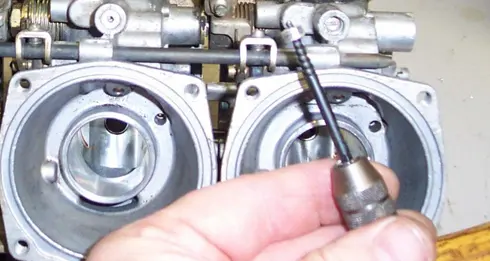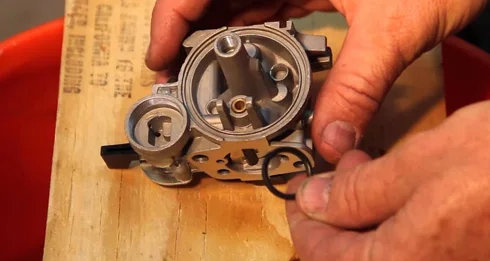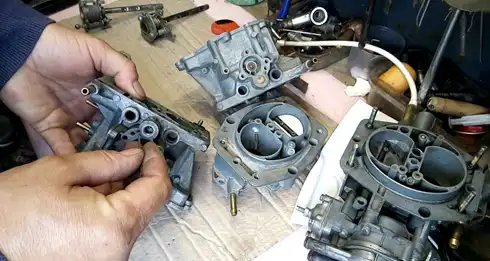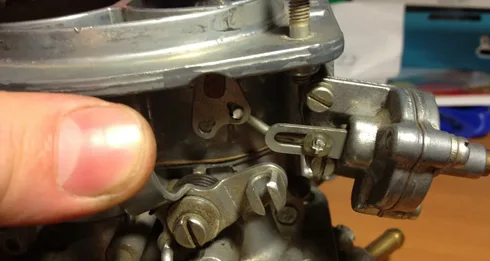If you’re a motorcycle owner, then at some point you’ll need to know how to drain a motorcycle carburetor. This is an essential maintenance task that should be performed periodically on all motorcycles.
Luckily, it’s a pretty easy process that most people can handle with ease. Here are the top easy steps to draining a motorcycle carburetor.
What is Motorcycle Carburetor?
A motorcycle carburetor is a small engine component that mix air and fuel before combustion. The carburetor is responsible for supplying the engine with the correct mixture of air and fuel.
Easy Steps on How to Drain a Motorcycle Carburetor

It is important to know how to properly drain your motorcycle carb in order to maintain optimal engine performance. Here are the 10 easy steps on how to do it:
Tools and Materials Needed
At first, when you want to know how to drain a motorcycle carburetor, you have to prepare the tools and materials needed. Here are the lists:
- Motorcycle with a carburetor
- A clean catch pan or bowl
- A socket wrench set
- A screwdriver set
Park Your Motorcycle on a Level Surface
Before starting to work, you have to park your motorcycle on a level surface and turn off the engine. This is to prevent any accidents while working.
Disconnect the Negative (-) Battery Cable
After that, you need to disconnect the negative (-) battery cable from the battery using a socket wrench. This will prevent the motorcycle from accidentally starting up while you’re working on it.
Remove the Old Gas Tank Cap and Pour out The Bad Gas
The next step is to remove the old gas tank cap and pour out all of the gas into a clean catch pan or bowl. Be sure to dispose of the gas properly according to your local laws and regulations.
Drain the Carburetor Float Bowl
Now, you need to locate the carburetor float bowl and use a screwdriver to remove the bowl drain plug. This will allow the excess fuel and water to drain from the carburetor. Then, you can remove the air cleaner cover and disconnect the air cleaner hose. This will allow you to work more efficiently.
Remove the Carburetor Bowl Screws
After that, you can remove the carburetor bowl screws using a screwdriver and detach the bowl from the carburetor. It’s time to drain the carburetor bowl into the catch pan or bowl. Be sure to hold on to the bowl so it doesn’t fall and break.
Clean the Carburetor Bowl
Once you have drained the carburetor bowl, you can then clean it out with a carburetor cleaner and a rag. Be sure to get all of the dirt and grime out of the bowl.
After you have cleaned the carburetor bowl, you can then reassemble the carburetor. Before putting the cover back on, be sure to reattach the air cleaner hose.
Reconnect the Negative (-) Battery Cable
Once you have reassembled the carburetor, you can then reconnect the negative (-) battery cable to the battery and start the engine. Be sure to check for any leaks while the engine is running.
The Precautions for Draining a Motorcycle Carburetor

You need to know some precautions before starting to drain a motorcycle carburetor. Here are the lists:
- Do not smoke while working on the carburetor. The fumes can be dangerous.
- Make sure to work in a well-ventilated area.
- Be careful when draining the carburetor bowl. It can be slippery.
- Make sure to reattach all of the hoses and screws properly. A loose hose or screw can cause engine problems.
- Be sure to check for any leaks while the engine is running.
The Importance of Draining a Motorcycle Carburetor
It is important to drain the motorcycle carburetor regularly in order to maintain optimal engine performance. A dirty or clogged carburetor can cause a number of problems, such as:
Poor Engine Performance
If the carburetor is not clean, it can cause the engine to run poorly. This can lead to decreased fuel economy and difficulty starting the engine.
Stalling of the Motorcycle
A dirty or clogged carburetor can also cause the motorcycle to stall. This can be very dangerous while riding and can lead to accidents.
Hesitating of the Motorcycle
A dirty or clogged carburetor can also cause a hesitating motorcycle. This can cause the engine to stall and can make it difficult to ride.
Rough Idling
A carburetor that is not clean can also cause the engine to idle rough. This can be very annoying and can make it difficult to ride the motorcycle.
Difficulty Starting the Motorcycle

If the carburetor is not clean, it can be very difficult to start the engine. This can be frustrating and can lead to a lot of wasted time.
Excessive Fuel Consumption
A dirty or clogged carburetor can also cause the engine to consume more fuel than it should. This can be very costly and can lead to higher emissions.
Increased Emissions
If the carburetor is not clean, it can cause the engine to emit more pollutants. This can be harmful to the environment and can also lead to higher emissions.
FAQs
How Long Gas can last In a Motorcycle Tank?
This depends on a few factors, such as the type of motorcycle, the size of the tank, and how often the motorcycle is ridden. However, in general, gasoline can last up to six months in a motorcycle tank.
How Often Should You Drain a Motorcycle Carburetor?

It is recommended that you drain the motorcycle carburetor every 6 months in order to maintain optimal engine performance.
What Are the Symptoms of a Dirty Motorcycle Carburetor?
The most common symptoms of a dirty motorcycle carburetor include poor performance, stalling, hesitating, rough idling, difficulty starting the engine, excessive fuel consumption, and increased emissions.
How to Prevent a Dirty Motorcycle Carburetor?
The best way to prevent a dirty motorcycle carburetor is to clean it and perform routine maintenance regularly. Additionally, it is essential to use fresh gasoline and to avoid storing the motorcycle in dusty or dirty areas.
Where Do You Drain a Carburetor?
The best place to drain a carburetor is into a clean container. This will help to prevent any spills or messes. Additionally, it is important to dispose of the old gasoline properly.
What Causes a Carburetor to Leak?
There are several reasons why a carburetor might leak, such as a loose hose or screw, an improperly installed gasket, or a damaged carburetor. If you notice any leaks, it is important to have the carburetor repaired as soon as possible.
Summary
It’s important to remember that fuel consumption, emissions, and engine performance are just a few of the problems caused by dirty or clogged carburetors. Routine maintenance is critical in order to avoid these issues and maintain optimal motorcycle performance. If you have any questions about how often your carburetor should be drained or where it should be drained, be sure to consult with a professional motorcycle mechanic. Thanks for reading!

